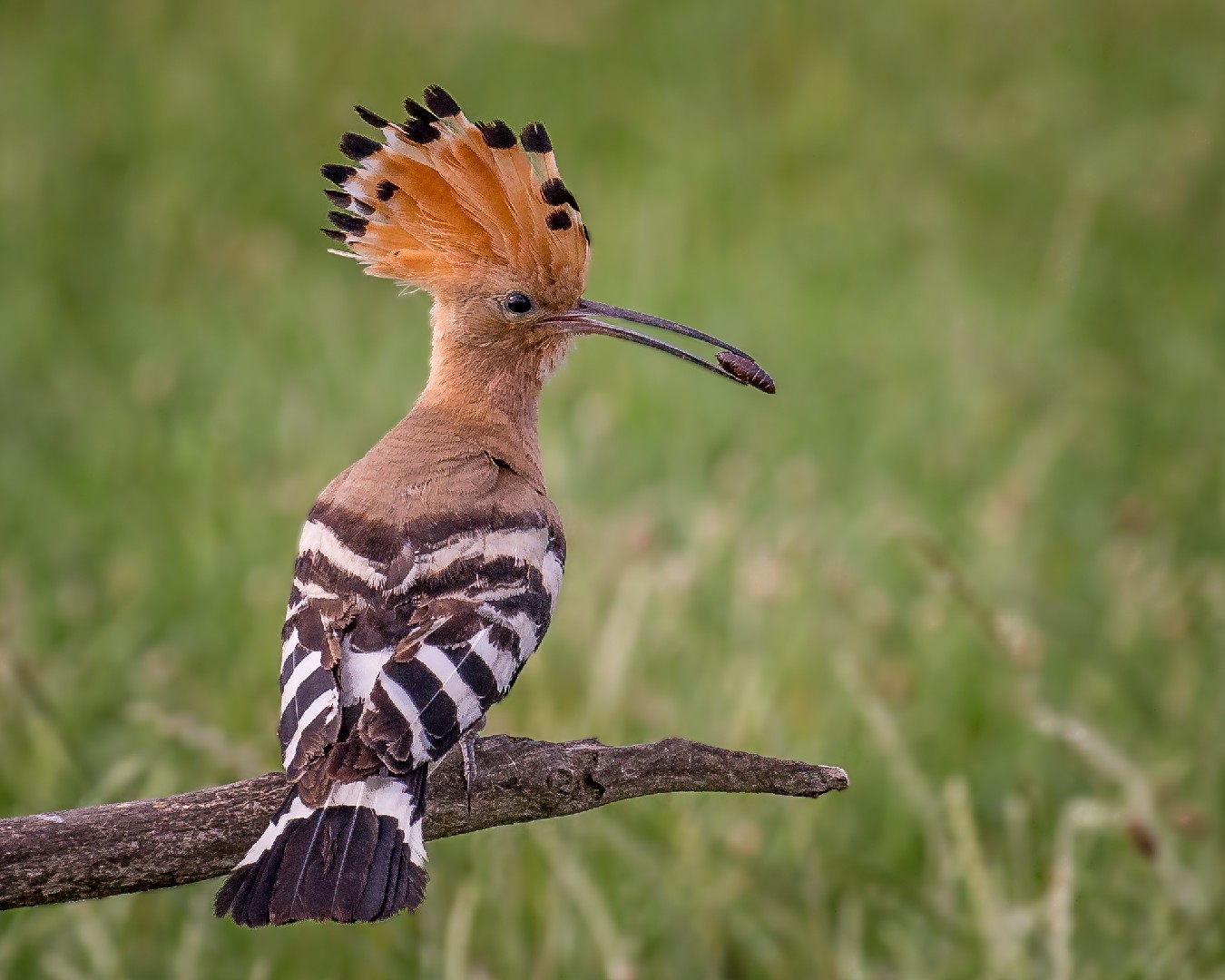Eurasian Hoopoe
A species of Hoopoes, Also known as Hoopoe Scientific name : Upupa epops Genus : Hoopoes
Eurasian Hoopoe, A species of Hoopoes
Also known as:
Hoopoe
Botanical name: Upupa epops
Genus: Hoopoes
Content
Description People often ask General Info
Description
Instantly recognizable by its crown-shaped crest and plumage pattern, the eurasian Hoopoe is a medium-sized, ground-feeding bird that reveals the stunning black and white stripes on its wings during flight. When on the ground, this insectivorous bird tends to move somewhat strangely, often changing direction suddenly. This attractive bird has an important significance among many cultures and is the national bird of Israel.
Size
25 - 32 cm
Life Expectancy
5-10 years
Nest Placement
Cavity
Feeding Habits
Eurasian Hoopoe primarily consumes insects, occasionally supplementing its diet with small reptiles, frogs, seeds, and berries. It forages solitarily on the ground and occasionally in flight, displaying agility with fast, rounded wings to catch swarming insects.
Habitat
Eurasian Hoopoe occupy diverse habitats such as heathlands, wooded steppes, and savannas, as well as forest clearings. These birds adapt to varied elevations, even up to 4600 meters. Their preferred environments have open areas with short grass, providing ample perching and nesting opportunities, like in pastures, parklands, or near human habitation, including villages and farms.
Dite type
Insectivorous
People often ask
General Info
Feeding Habits
Bird food type
Behavior
In what was long thought to be a defensive posture, hoopoes sunbathe by spreading out their wings and tail low against the ground and tilting their head up; they often fold their wings and preen halfway through. They also enjoy taking dust and sand baths. 
Distribution Area
The Eurasian hoopoe is widespread in Europe, Asia, and North Africa and northern Sub-Saharan Africa. Most European and north Asian birds migrate to the tropics in winter. In contrast, the African populations are sedentary all year. The species has been a vagrant in Alaska; U. e. saturata was recorded there in 1975 in the Yukon Delta. 
